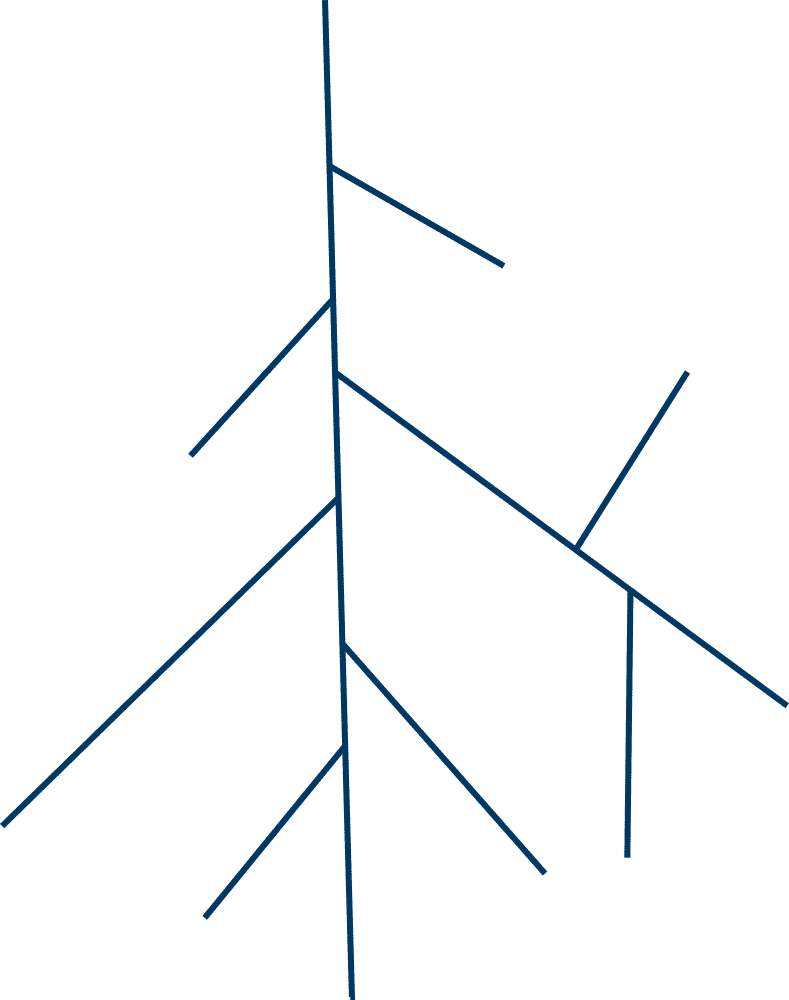There is no limit to the layouts you can create with Two-wire systems. We’ll cover the most common styles used and their benefits.
Fish Bone / Star / Tree #
This is one of the most popular and common layouts. These can be identified by having the main leg exiting the controller and branch lines coming off the mainline.

Pros: #
- Easy to identify any electrical issues. Valve number 40 will work but number 41 doesn’t and you start checking the connections at valve 41 and work back along the line to 40.
- Easy to follow the lateral lines. Following your hydraulic lateral lines with the Two-wire electrical lines, makes it easier to find valves.
- East to add stations. Since your hydraulic and electric lines run together you can add stations by creating a T-splice.
Cons: #
- Limits to the total length of the wires. You must calculate the length of each leg to ensure you do not exceed your maximum wire run.
Loop #
This layout is not supported, or recommended, by Hydro-Rain for the High Station Count controller.
This layout is less common. Its key feature is the Two-wire electrical path exits the controller continues to the farthest valve then returns back to the controller.
Pros: #
- Longer runs are possible. Since the signal is split from the controller.
- Robust design. The signal is moving down multiple legs and will bypass breaks.
Cons: #
- More difficult to troubleshoot. Since the signal is split you can have multiple breaks before a station stops working.
- Requires more wire. Wire lengths are doubled in a loop layout.




